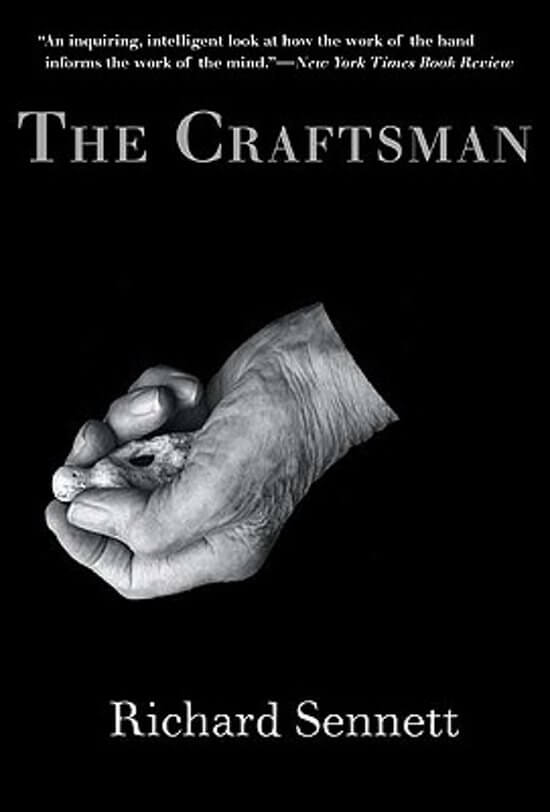Four Reflections on Craft
The Craftsman
Near the end of the book, The Craftsman by Richard Sennett, he talks about vocation, which he calls a "sustaining narrative."

He discusses the German term for vocation—Beruf—and how it evokes two meanings:
the gradual accumulation of knowledge and skills and the ever-stronger conviction that one was meant to do this one particular thing in one's life."
My Sustaining Narrative
This week, I have been revisiting my resumé, elaborating on not only my teaching and writing experience but my film production background as well. As I edit and shape the items on the page, I reconstruct the narrative of my life.
Long ago, I was a writer, then transitioned into film because I loved the speed of image to show a story as opposed to the slow process of fleshing out a plot on the page. I received my film education, and worked in the industry, but found I had shifted too far away from the creative work of storytelling, so with time, patience, and independent study, I worked my way back into writing. As I rediscovered storytelling, I wanted to share help those who also got lost along the way.
My resumé shows this journey, moving from one phase of my life to the next. Yet, underneath it all, I see the "sustaining narrative" of storytelling.
P.D. James
While executing my role as a stay-at-home father and chauffeur, I was listening to the interview on CBC's Writers and Company with the English crime writer P.D. James.
In it, she said:
I thought I could write the mystery novel and if I did, it could stand a good chance at acceptance because it is a popular form. I love structural form. I love a novel to have shape and narrative thrust...
But also I thought, I was setting up with fairly high artistic ambitions, I didn't think about making a lot of money but I wanted to be a very good and well-regarded writer and I thought tackling this rather difficult form would be a marvelous apprenticeship.
If I could do it well, this would teach me so much. And then when I continued in the craft of the mystery, I came to believe what I very firmly believe now is that I can stay within the constraints, the somewhat artificial form—some people might unkindly call it a formula—stay within the conventions and be a good novelist and use the mystery not only to provide an exciting story and a credible puzzle but also say something true about men, women, and about the society in which we live.
Window installation
A couple of weeks ago, two men installed a window at my family's cabin. There wasn't much I could do—I don't really know the first thing about the job—so I watched. It was below freezing, they didn't take a break, and they barely spoke to each other. In a couple of hours, they removed the old window, installed, the three new panels, and finished off the trim.
I couldn't help but be impressed how they didn't overthink it or question the work they did, something more than enough writers (or want-to-be writers) are guilty of doing. Bringing it all together
At the end of his book, Sennett remarks on the social value of the craftsman—flawed, a source of unease—as opposed to the romanticized image of the artist.
In my own work, I have struggled with these oppositions—wanting to claim the idealized power of the creator—while respecting the slow careful practice and repetition of the craftsman.
I made a conscious choice to have Ang and I work on a popular genre. We embraced the form of a three-act structure to build and shape our story and we have long conversations in which we consider our audience. Yet, I still embrace the artist, building a business that uses the work that Ang and I do to help support writers in Saskatchewan.
I love the notion of vocation and if I was to consider what the sustaining narrative of my life has been to this point, it has always been rooted in a love of storytelling, whether it abides a time-tested form or willingly shrugs off those constraints to continue to test and consider what remains outside the known contours.
My hope for myself, as well as for my students and my readers, is to never diminish the work of the craftsman. It requires concentration, diligence, and intuition, while always exploring the solutions and limits of either a task or a creation through consistent questioning, testing, and repair. Whether the craftsman realizes it or not, this requires a certain pride in one's labour.
